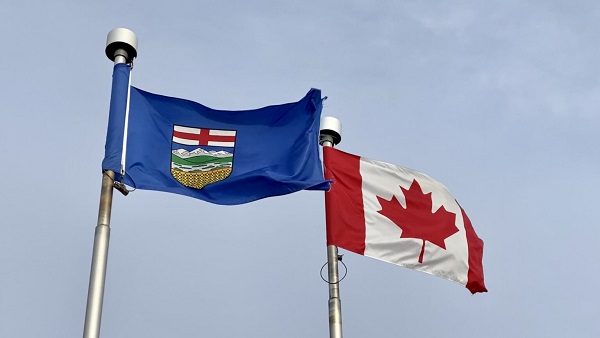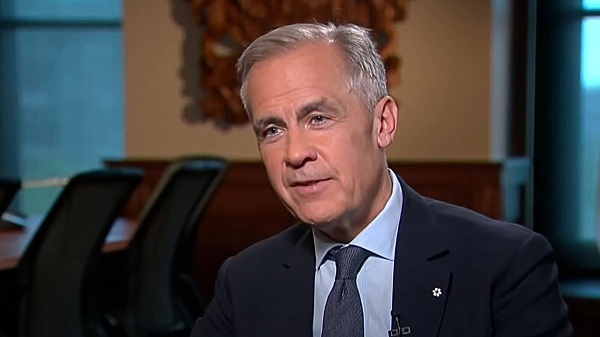Alberta
Alberta budget announces record high health spending including money for new and redeveloped hospitals

Alberta’s government is providing another year of record-high investment, with $24.5 billion in the Ministry of Health’s operating expense this year, an increase of 4.1 per cent from last year. This new funding will focus on addressing areas of priority in the Healthcare Action Plan to improve the health-care services Albertans expect and deserve. In addition, Alberta’s primary health-care system is being strengthened and modernized with a record investment of $243 million over three years.
Budget 2023 provides $3.1 billion in capital funding over three years to further build up Alberta’s valuable health-care infrastructure, an additional $529 million in capital maintenance and renewal for health facilities and a further $732 million in self-financed funding. The $3.1 billion includes funding for the redevelopment and expansion of the Red Deer Regional Hospital, increasing critical services and capacity in one of Alberta’s largest hospitals.
Additionally, $18 million over three years is for further planning for proposed health capital projects across the province, including the stand-alone Stollery Children’s Hospital in Edmonton, a north Calgary/Airdrie regional health centre, expansion of the Strathcona Community Hospital, and new or upgraded facilities in Bassano, Cardston and Whitecourt.
A total of $237 million over three years will go towards the Alberta Surgical Initiative Capital Program, with $120 million in new funding to expand and modernize operating rooms in 15 communities across the province and reduce wait times for surgeries.
The new Health Workforce Strategy will help get Albertans the care they need, when and where they need it. Budget 2023 includes $158 million in 2023-24 to retain and support, attract, grow, strengthen and evolve the health-care workforce, including physicians and nurses.
“Building a resilient and responsive health-care system that meets the needs of Albertans is essential to keeping our province healthy. This is why Budget 2023 includes another record-high health-care investment, so we can put the right health-care professionals, resources and services where they are needed most.”
Budget 2023 invests in emergency medical services (EMS) to improve ambulance response times. An increase of $196 million over three years will help hire more staff and implement recommendations from the Alberta EMS Provincial Advisory Committee. A new capital program will provide $15 million over three years to put more ambulances on the road.
As part of the initiative to improve primary health care, Alberta’s government is investing more than $2 billion in 2023-24. This includes $243 million over three years to strengthen the province’s primary care system, including implementing the recommendations from the three advisory panels of Modernizing Alberta’s Primary Health Care System (MAPS) established in fall 2022. These recommendations will inform the government’s immediate next steps and a path forward over the next five to 10 years.
“Investing in health care is not just a cost, it’s an investment in our future. By increasing critical health-care capacity, we can ensure that our health-care system is equipped to meet the needs of our citizens and provide the highest quality of care possible.”
“Over the next three years, Alberta’s government is investing $23 billion into public infrastructure through the 2023 Capital Plan. By building and revitalizing hospitals, schools, courthouses and other public facilities, we are investing in the critical infrastructure projects that Albertans need and help keep people working.”
Budget 2023 includes nearly $4.3 billion in combined operating support for community care, continuing care and home care programs, an increase of more than 15 per cent, or $570 million from the 2022-23 forecast. An investment of $1 billion over three years will support continuing care transformation that will shift care to the community, enhance workforce capacity, increase choice and innovation, and improve the quality of care within the sector. In addition, there is $310 million over three years for the Continuing Care Capital Program, which supports modernizing continuing care facilities, developing innovative small care homes, providing culturally appropriate care for Indigenous Peoples and building new spaces in priority communities having the greatest need.
Budget 2023 includes operating expense of $148 million in 2023-24 for the Ministry of Mental Health and Addiction. In addition, it supports Alberta Health Services with additional funding to reduce wait times for mental health and addiction services and address gaps in the system. Alberta spends more than $1 billion per year on mental health and addiction programs and services, excluding physician billings. Over the next three years, Alberta’s government will also invest $155 million in capital funding to continue building holistic, long-term recovery communities where Albertans will be able to access detox services, treatment medications, peer support, and help with skills and training.
“Alberta has emerged as a national leader in building out recovery-oriented systems of care for addiction and mental health. The historic investments included in Budget 2023 will help us further expand treatment and recovery services, enabling us to support more Albertans in their pursuit of recovery.”
Budget 2023 highlights
- $6.2 billion budgeted in 2023-24, increasing to more than $6.4 billion by 2025-26 for physician compensation and development programs.
- More than $250 million over four years (beginning in 2022-23) for recruitment and retention programs under the agreement with the Alberta Medical Association so more Albertans can access family doctors, and to provide more support to help physicians keep their clinics open and running.
- More than $2 billion per year for Drugs and Supplemental Health benefit programs. The Seniors Drug program budget is the largest component of this suite of programs, with $693 million budgeted in 2023-24, supporting more than 700,000 seniors.
- More than $2 billion in 2023-24 to support primary care in Alberta, including payments to family doctors.
- $125 million over three years as an initial investment, providing funding for early opportunities to improve primary care identified through the Modernizing Alberta’s Primary Health Care Systems (MAPS) initiative.
Budget 2023 secures Alberta’s bright future by transforming the health-care system to meet people’s needs, supporting Albertans with the high cost of living, keeping our communities safe and driving the economy with more jobs, quality education and continued diversification.
Alberta
Alberta judge sides with LGBT activists, allows ‘gender transitions’ for kids to continue

From LifeSiteNews
‘I think the court was in error,’ Alberta Premier Danielle Smith has said. ‘There will be irreparable harm to children who get sterilized.’
LGBT activists have won an injunction that prevents the Alberta government from restricting “gender transitions” for children.
On June 27, Alberta King’s Court Justice Allison Kuntz granted a temporary injunction against legislation that prohibited minors under the age of 16 from undergoing irreversible sex-change surgeries or taking puberty blockers.
“The evidence shows that singling out health care for gender diverse youth and making it subject to government control will cause irreparable harm to gender diverse youth by reinforcing the discrimination and prejudice that they are already subjected to,” Kuntz claimed in her judgment.
Kuntz further said that the legislation poses serious Charter issues which need to be worked through in court before the legislation could be enforced. Court dates for the arguments have yet to be set.
READ: Support for traditional family values surges in Alberta
Alberta’s new legislation, which was passed in December, amends the Health Act to “prohibit regulated health professionals from performing sex reassignment surgeries on minors.”
The legislation would also ban the “use of puberty blockers and hormone therapies for the treatment of gender dysphoria or gender incongruence” to kids 15 years of age and under “except for those who have already commenced treatment and would allow for minors aged 16 and 17 to choose to commence puberty blockers and hormone therapies for gender reassignment and affirmation purposes with parental, physician and psychologist approval.”
Just days after the legislation was passed, an LGBT activist group called Egale Canada, along with many other LGBT organizations, filed an injunction to block the bill.
In her ruling, Kuntz argued that Alberta’s legislation “will signal that there is something wrong with or suspect about having a gender identity that is different than the sex you were assigned at birth.”
She further claimed that preventing minors from making life-altering decisions could inflict emotional damage.
However, the province of Alberta argued that these damages are speculative and the process of gender-transitioning children is not supported by scientific evidence.
“I think the court was in error,” Alberta Premier Danielle Smith said on her Saturday radio show. “That’s part of the reason why we’re taking it to court. The court had said there will be irreparable harm if the law goes ahead. I feel the reverse. I feel there will be irreparable harm to children who get sterilized at the age of 10 years old – and so we want those kids to have their day in court.”
READ: Canadian doctors claim ‘Charter right’ to mutilate gender-confused children in Alberta
Overwhelming evidence shows that persons who undergo so-called “gender transitioning” procedures are more likely to commit suicide than those who are not given such irreversible surgeries. In addition to catering to a false reality that one’s sex can be changed, trans surgeries and drugs have been linked to permanent physical and psychological damage, including cardiovascular diseases, loss of bone density, cancer, strokes and blood clots, and infertility.
Meanwhile, a recent study on the side effects of “sex change” surgeries discovered that 81 percent of those who have undergone them in the past five years reported experiencing pain simply from normal movements in the weeks and months that followed, among many other negative side effects.
Alberta
Why the West’s separatists could be just as big a threat as Quebec’s

By Mark Milke
It is a mistake to dismiss the movement as too small
In light of the poor showing by separatist candidates in recent Alberta byelections, pundits and politicians will be tempted to again dismiss threats of western separatism as over-hyped, and too tiny to be taken seriously, just as they did before and after the April 28 federal election.
Much of the initial skepticism came after former Leader of the Opposition Preston Manning authored a column arguing that some in central Canada never see western populism coming. He cited separatist sympathies as the newest example.
In response, (non-central Canadian!) Jamie Sarkonak argued that, based upon Alberta’s landlocked reality and poll numbers (37 per cent Alberta support for the “idea” of separation with 25 per cent when asked if a referendum were held “today”), western separation was a “fantasy” that “shouldn’t be taken seriously.” The Globe and Mail’s Andrew Coyne, noting similar polling, opined that “Mr. Manning does not offer much evidence for his thesis that ‘support for Western secession is growing.’”
Prime Minister Mark Carney labelled Manning’s column “dramatic.” Toronto Star columnist David Olive was condescending. Alberta is “giving me a headache,” he wrote. He argued the federal government’s financing of “a $34.2-billion expansion of the Trans Mountain pipeline (TMX)” as a reason Albertans should be grateful. If not, wrote Olive, perhaps it was time for Albertans to “wave goodbye” to Canada.
As a non-separatist, born-and-bred British Columbian, who has also spent a considerable part of his life in Alberta, I can offer this advice: Downplaying western frustrations — and the poll numbers — is a mistake.
One reason is because support for western separation in at least two provinces, Alberta and Saskatchewan, is nearing where separatist sentiment was in Quebec in the 1970s.
In our new study comparing recent poll numbers from four firms (Angus Reid Institute, Innovative Research Group, Leger, and Mainstreet Research), the range of support in recent months for separation from Canada in some fashion is as follows, from low to high: Manitoba (6 per cent to 12 per cent); B.C. (nine per cent to 20 per cent); Saskatchewan (20 per cent to 33 per cent) and Alberta (18 per cent to 36.5 per cent). Quebec support for separation was in a narrow band between 27 per cent and 30 per cent.
What such polling shows is that, at least at the high end, support for separating from Canada is now higher in Saskatchewan and Alberta than in Quebec.
Another, even more revealing comparison is how western separatist sentiment now is nearing actual Quebec votes for separatism or separatist parties back five decades ago. The separatist Parti Québécois won the 1976 Quebec election with just over 41 per cent of the vote. In the 1980 Quebec referendum on separation, “only” 40 per cent voted for sovereignty association with Canada (a form of separation, loosely defined). Those percentages were eclipsed by 1995, when separation/sovereignty association side came much closer to winning with 49.4 per cent of the vote.
Given that current western support for separation clocks in at as much as 33 per cent in Saskatchewan and 36.5 per cent in Alberta, it begs this question: What if the high-end polling numbers for western separatism are a floor and not a ceiling for potential separatist sentiment?
One reason why western support for separation may yet spike is because of the Quebec separatist dynamic itself and its impact on attitudes in other parts of Canada. It is instructive to recall in 1992 that British Columbians opposed a package of constitutional amendments, the Charlottetown Accord, in a referendum, in greater proportion (68.3 per cent) than did Albertans (60.2 per cent) or Quebecers (56.7 per cent).
Much of B.C.’s opposition (much like in other provinces) was driven by proposals for special status for Quebec. It’s exactly why I voted against that accord.
Today, with Prime Minister Carney promising a virtual veto to any province over pipelines — and with Quebec politicians already saying “non” — separatist support on the Prairies may become further inflamed. And I can almost guarantee that any whiff of new favours for Quebec will likely drive anti-Ottawa and perhaps pro-separatist sentiment in British Columbia.
There is one other difference between historic Quebec separatist sentiment and what exists now in a province like Alberta: Alberta is wealthy and a “have” province while Quebec is relatively poor and a have-not. Some Albertans will be tempted to vote for separation because they feel the province could leave and be even more prosperous; Quebec separatist voters have to ask who would pay their bills.
This dynamic again became obvious, pre-election, when I talked with one Alberta CEO who said that five years ago, separatist talk was all fringe. In contrast, he recounted how at a recent dinner with 20 CEOs, 18 were now willing to vote for separation. They were more than frustrated with how the federal government had been chasing away energy investment and killing projects since 2015, and had long memories that dated back to the National Energy Program.
(For the record, they view the federal purchase of TMX as a defensive move in response to its original owner, Kinder Morgan, who was about to kill the project because of federal and B.C. opposition. They also remember all the other pipelines opposed/killed by the Justin Trudeau government.)
Should Canadians outside the West dismiss western separatist sentiment? You could do that. But it’s akin to the famous Clint Eastwood question: Do you feel lucky?
Mark Milke is president and founder of the Aristotle Foundation for Public Policy and co-author, along with Ven Venkatachalam, of Separatist Sentiment: Polling comparisons in the West and Quebec.
-

 COVID-1912 hours ago
COVID-1912 hours agoOntario man launches new challenge against province’s latest attempt to ban free expression on roadside billboards
-

 Energy20 hours ago
Energy20 hours agoThis Canada Day, Celebrate Energy Renewal
-

 Business2 days ago
Business2 days agoWhile China Hacks Canada, B.C. Sends Them a Billion-Dollar Ship Building Contract
-

 Alberta2 days ago
Alberta2 days agoSo Alberta, what’s next?
-

 Alberta11 hours ago
Alberta11 hours agoAlberta Next Takes A Look At Alberta Provincial Police Force
-

 Bjorn Lomborg2 days ago
Bjorn Lomborg2 days agoThe Physics Behind The Spanish Blackout
-

 Alberta13 hours ago
Alberta13 hours agoCanadian Oil Sands Production Expected to Reach All-time Highs this Year Despite Lower Oil Prices
-

 Business15 hours ago
Business15 hours agoPotential For Abuse Embedded In Bill C-5






